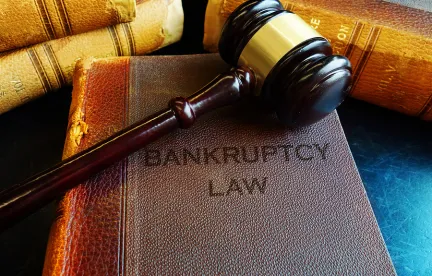On February 19, 2020, the Small Business Reorganization Act of 2019 (SBRA) took effect.
The SBRA added a new subsection to Chapter 11 of the Bankruptcy Code, so creditors may hear it called Subchapter V. It creates a faster and less expensive Chapter 11 reorganization path for small business debtors. Since it's been effective for less than a month, we don't yet know how everything will work in practice. The SBRA includes many new provisions, but here are the key differences from a regular Chapter 11 that creditors should keep top of mind.
Eligibility
To be eligible for Subchapter V, a debtor (whether an entity or an individual) must be engaged in commercial activity and its total debts -- secured and unsecured – must be less than $2,725,625. At least half of those debts must come from business activity. The debtor's principal activity cannot be a single-asset real estate operation. The debtor must elect to proceed under Subchapter V. Otherwise, the regular Chapter 11 rules apply.
Filing Requirements
Upon filing its bankruptcy petition, the Subchapter V debtor must also file a balance sheet, statement of operations, cash flow statements, and federal tax returns.
Trustee
The court will appoint a trustee, but his or her powers are more like a Chapter 12 trustee (for family farmer bankruptcies) than a traditional Chapter 7 or 11 trustee. The Subchapter V trustee does not take possession of a debtor's assets and lacks the ability to sell those assets. The trustee is more like an advisor and handler -- facilitating the development of a consensual reorganization plan, appearing at major hearings, and ensuring that the debtor makes timely payments under the plan. The debtor must pay the Subchapter V trustee.
The Process
The process moves at light speed by traditional Chapter 11 standards. The Court will hold a status conference within 60 days from the filing. At least 14 days before that conference, the debtor must report in writing on the efforts made, and to be made, to get a consensual plan. The debtor must file its plan of reorganization within 90 days from the filing. Only the debtor may file a plan. This differs from a regular Chapter 11 where – if the debtor does not file a plan within a certain period -- creditors or other parties in interest may file a plan.
A Subchapter V debtor need not file a disclosure statement. This is a regular Chapter 11 requirement designed to provide creditors with sufficient information to analyze and vote for or against the plan. In practice, it can lead to protracted disputes and delays as the parties argue over the adequacy of the disclosures. As an alternative to a disclosure statement, the plan must include a brief history of the business operations, a liquidation analysis, and projections demonstrating the ability of the debtor to make the proposed plan payments.
Usually, there will be no creditors' committee – another cut to reduce time and expense.
Plan Confirmation
In a regular Chapter 11, creditors vote on a plan. But in Subchapter V, a debtor can confirm a plan even without acceptance by creditors. To do so, the plan must not discriminate unfairly and must be fair and equitable. Creditors must still receive as much under the plan as they would if the debtor were liquidated in Chapter 7. Subchapter V also includes an option for the debtor to contribute all "projected disposable income" to making plan payments for three to five years – much like a Chapter 13 plan. Projected disposable income is everything after expenses to maintain and support the debtor (or a dependent) and expenditures necessary for business operations.
To confirm the plan, the court must find (1) the debtor will be able to make all payments under the plan or (2) there is a reasonable likelihood that the debtor will be able to make all payments under the plan and the plan contains appropriate remedies to protect creditors if payments are not made as proposed.
Discharge
With a consensual plan, the debtor will receive a discharge at confirmation. Without a consensual plan, the debtor will receive a discharge if he completes all plan payments.
Preferences
The SBRA also made changes dealing with preferences -- "clawback" actions where a trustee or debtor seeks to recover money from entities who received it before the bankruptcy filing. The debtor must exercise reasonable due diligence under the circumstances "taking into account a party's known or reasonably knowable affirmative defenses" before filing a preference lawsuit. This may deter debtors from filing "shakedown" actions that ought not to be filed. If the preference claim is less than $25,000, the preference suit must be brought in the federal district where the defendant resides. This is welcome news for any creditor who received a small-dollar preference demand or lawsuit from a bankruptcy in another state.
Miscellaneous
The SBRA contains many other provisions. They include changes to the "absolute priority" rule and the ability of a debtor to modify the rights of a creditor secured only by the debtor's personal residence. We will examine those changes in more detail in a future article.
We will be monitoring how these cases operate in practice and how the courts treat the new issues raised by the SBRA. The key takeaway for creditors is that the process is designed to move quickly, so you should not tarry if a borrower elects to file bankruptcy under Subchapter V.




 />i
/>i
